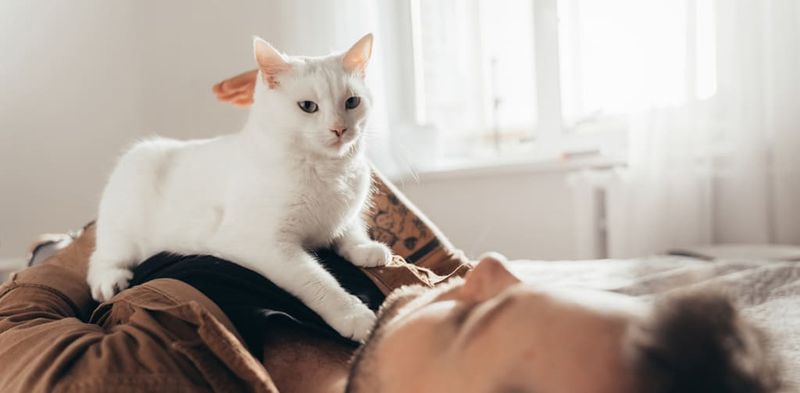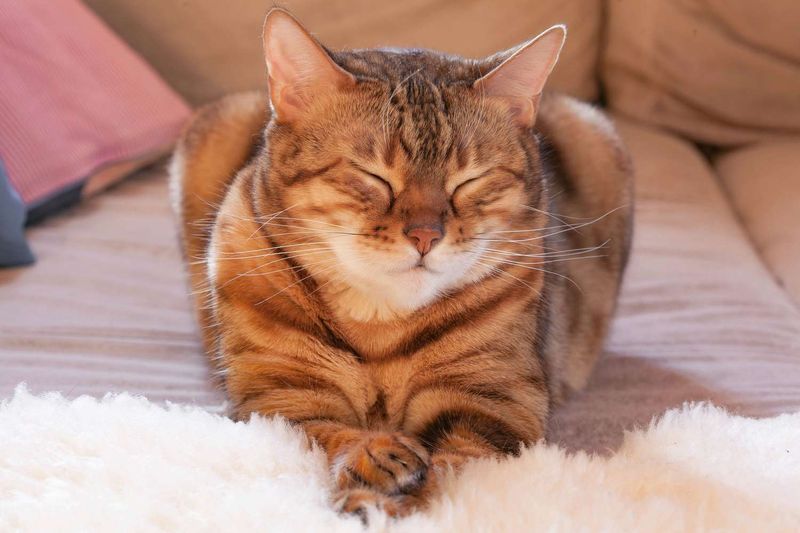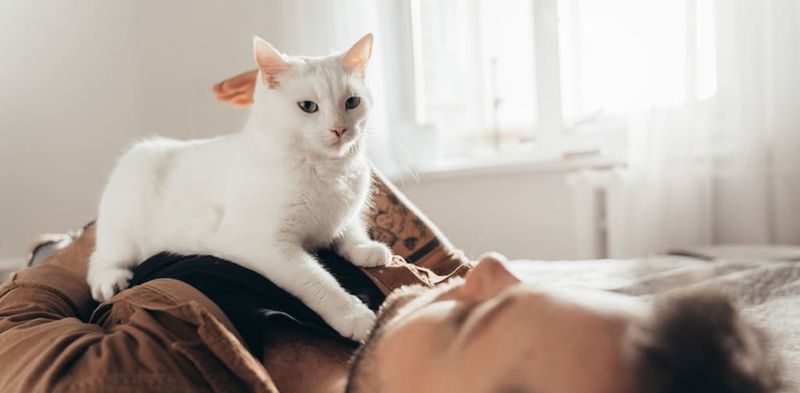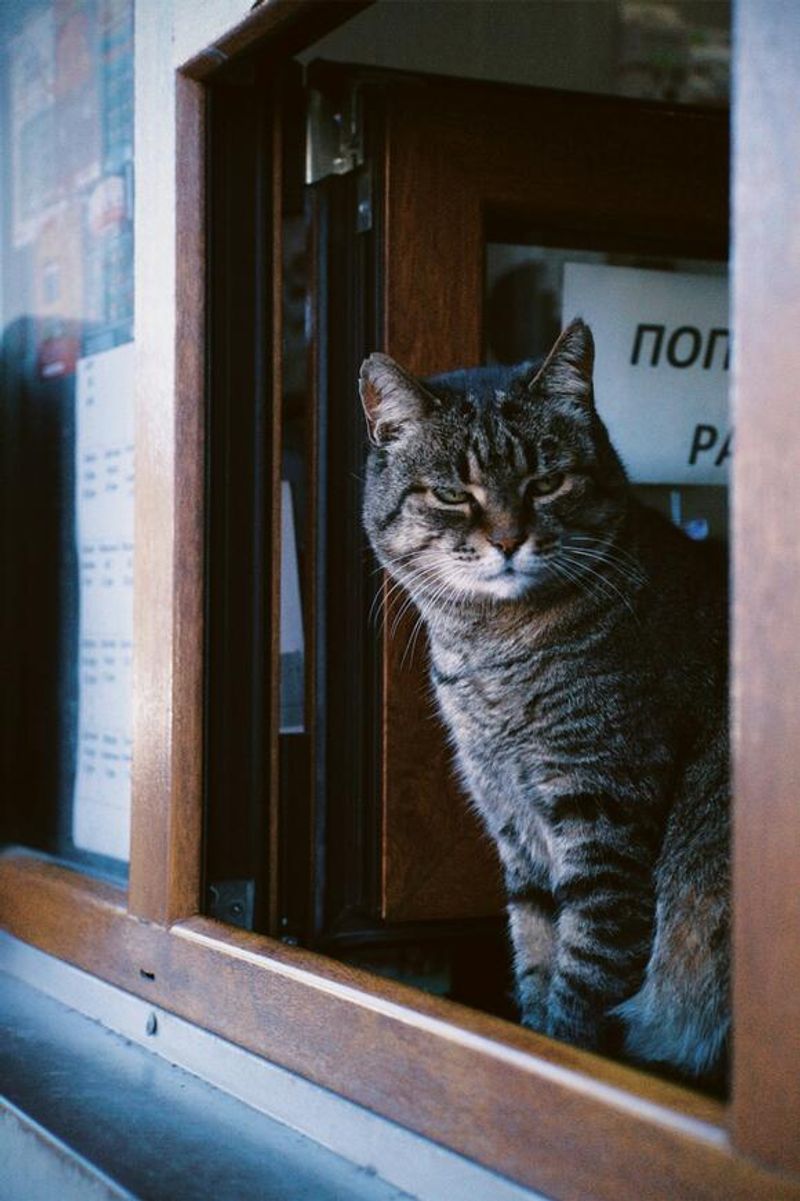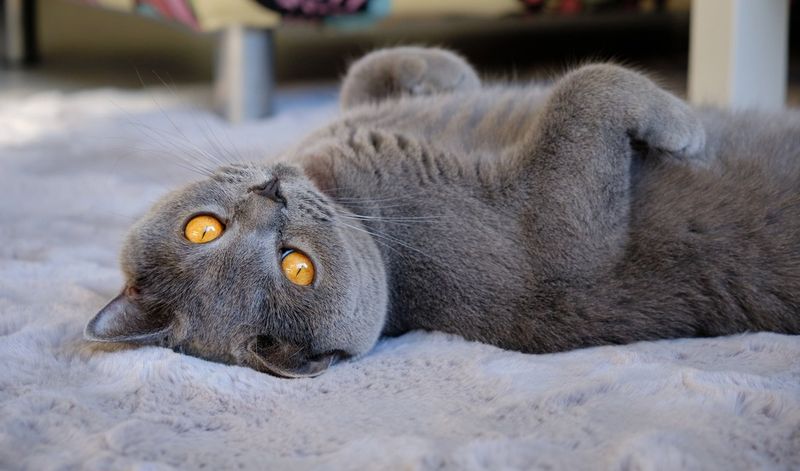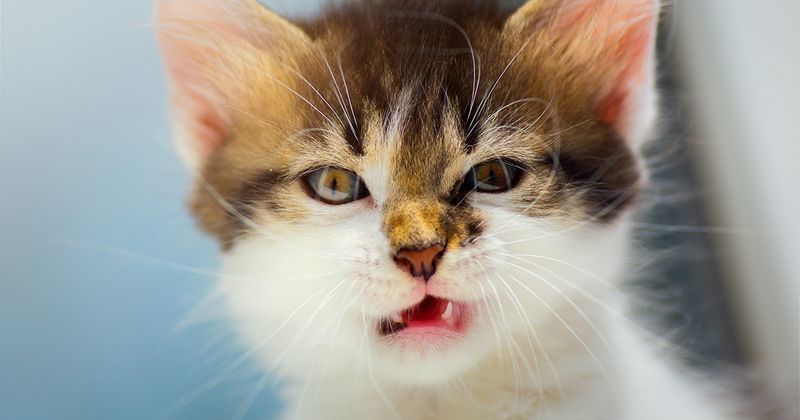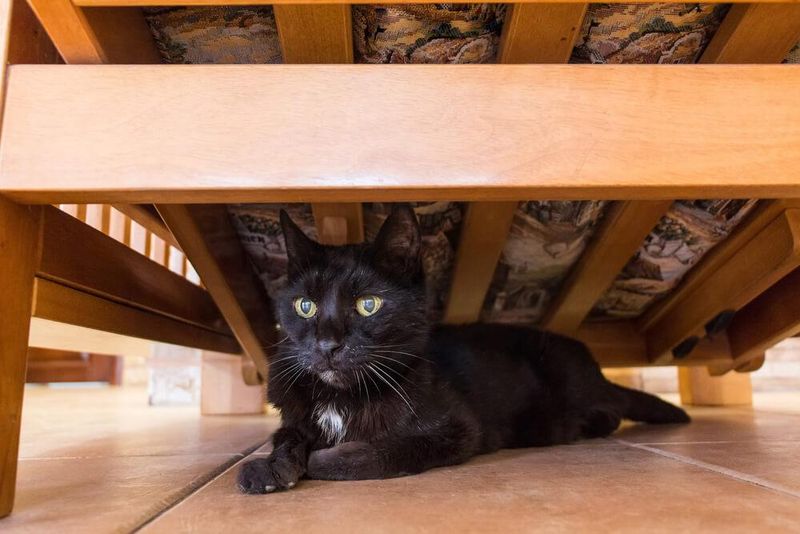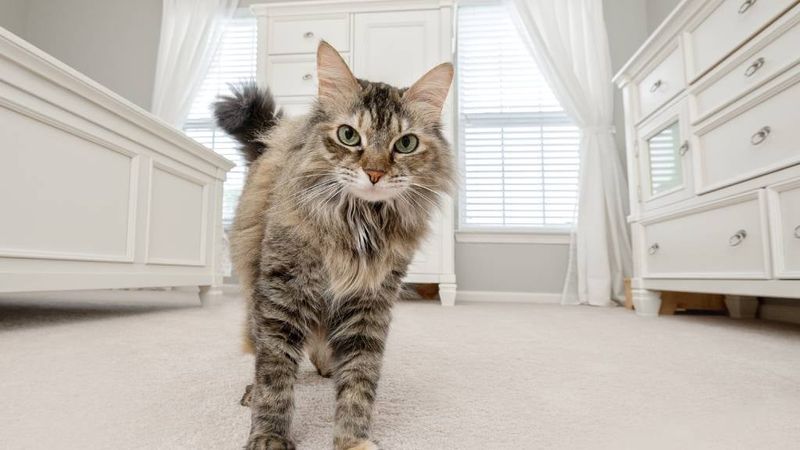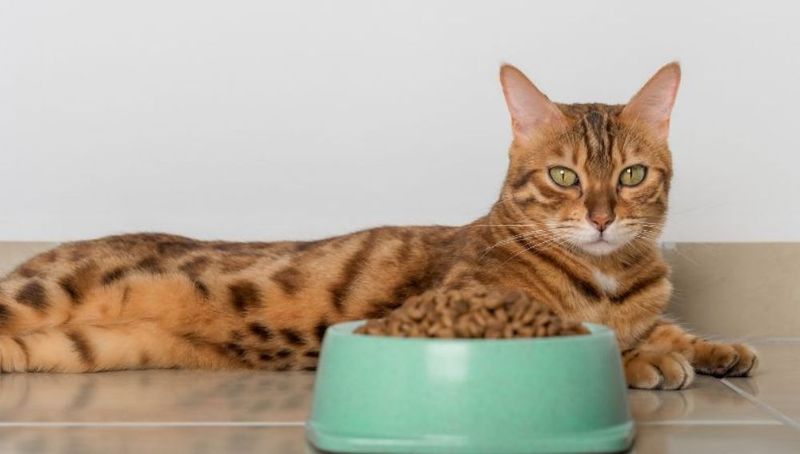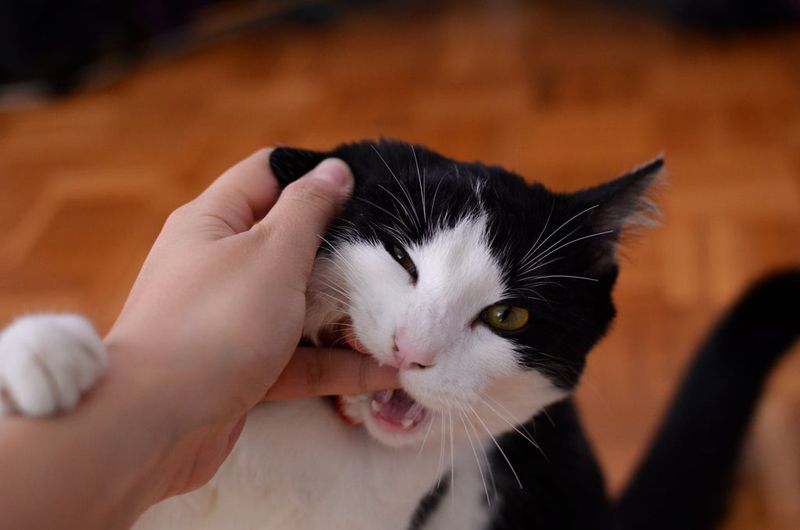📖 Table of Content:
- 1. Slow Blinking at You
- 2. Kneading on You
- 3. Following You from Room to Room
- 4. Exposing Their Belly
- 5. Bringing You “Gifts”
- 6. Avoiding Eye Contact or Staring Aggressively
- 7. Hiding When You Enter the Room
- 8. Flicking Tail When Approached
- 9. Only Eating When You’re Gone
- 10. Swatting or Biting During Petting
Building a strong emotional bond with your cat can be one of the most rewarding parts of pet ownership—but it doesn’t always happen overnight. Cats are complex, independent creatures who show affection in subtle, sometimes surprising ways. Understanding their behaviors is key to building mutual trust and love.
While some feline behaviors clearly say “I love you,” others may indicate that your cat is still figuring out how safe they feel in your presence. It’s important to recognize both ends of the spectrum—not just the cuddles and purrs, but also the tail flicks and disappearing acts. These signs can help guide you in strengthening your connection and meeting your cat where they are emotionally.
In this article, we’ll walk through 5 telltale signs that your cat truly loves you—and 5 that suggest your bond needs a little more nurturing. Whether you’re a new cat parent or a seasoned feline whisperer, these insights can help deepen your relationship and create a more trusting, affectionate home for both of you.
1. Slow Blinking at You
Have you ever caught your cat gazing at you, then slowly closing and reopening their eyes? That’s not boredom—it’s a feline way of saying “I trust you.” In the cat world, prolonged eye contact can be a threat, so soft, slow blinking is their version of a friendly handshake. When your cat offers this gesture, try slow-blinking back to reinforce the bond. Many behaviorists refer to this as a “cat kiss,” and it’s one of the clearest signs of affection. Unlike dogs, cats don’t always express love with wagging tails or face licks. Their body language is more nuanced, and this blink speaks volumes. So the next time your cat blinks at you, know it’s more than a reflex—it’s a message of calm and connection.
2. Kneading on You
Kittens instinctively knead their mother’s belly while nursing, and some adult cats carry that behavior into adulthood. If your cat climbs into your lap and starts rhythmically pushing their paws into your clothing, they’re showing deep emotional comfort. This action is often paired with purring and drooling, all signs they feel safe and content. Some cats will even close their eyes while kneading, lost in the moment. Far from being random, this behavior is usually reserved for people they really trust. It may be a little painful when claws are involved, but it’s a gesture of love. Consider placing a soft blanket on your lap to make kneading more comfortable for both of you. It’s one of the purest expressions of kitty affection.
3. Following You from Room to Room
Cats don’t follow just anyone—they follow their favorite humans. If your feline seems to trail behind you like a fluffy shadow, it means they want to be part of your day. While they might not want to be picked up or cuddled all the time, your presence is clearly comforting. This behavior shows you’re more than just a food dispenser—you’re their person. Even when they pretend not to care, your cat may be silently keeping tabs on your every move. Some will even sit near the door waiting for you to return. In a world where independence is the feline default, choosing proximity is a sign of genuine attachment. So next time you see them curled up nearby, remember—they chose to be there.
4. Exposing Their Belly
Belly-up is the ultimate show of trust in the cat kingdom. Since a cat’s stomach is one of its most vulnerable areas, exposing it means they feel completely safe around you. It doesn’t always mean they want belly rubs—but it does signal that they don’t see you as a threat. This position leaves them open to potential danger, so they only do it when they’re totally relaxed. It often happens during nap time or in familiar environments. Watch for other signs of calm, like half-closed eyes or a slow-moving tail. If your cat rolls over and stretches out, take it as a compliment. They’re letting their guard down—and that means love.
5. Bringing You “Gifts”
Cats are natural hunters, and they often share their prey with those they consider part of their group. Whether it’s a toy, a sock, or a (yikes!) dead insect, these “gifts” are more symbolic than practical. From their perspective, they’re contributing to the household by offering you something valuable. It’s not always pleasant, but it’s rooted in affection. You’re seen as part of their social unit, and they want to take care of you. If you respond with praise rather than disgust, you’ll reinforce that bond. Indoor cats might bring you random items instead of real prey—but the meaning is the same. It’s their way of saying, “I care.”
6. Avoiding Eye Contact or Staring Aggressively
Eye behavior can be very telling when it comes to feline trust. A cat that avoids your gaze may be feeling anxious or unsure about you. On the flip side, a hard, unblinking stare can indicate that they see you as a potential threat. Cats communicate a lot through their eyes, and these behaviors are worth paying attention to. It’s best to avoid forcing eye contact—let your cat approach you on their terms. Try using the slow blink technique to initiate a softer exchange. Over time, their reactions can shift from wary to warm. Learning their comfort cues helps create a safer environment for trust to grow.
7. Hiding When You Enter the Room
A cat that disappears as soon as you walk in is likely feeling scared or insecure. This is especially common in new or recently adopted cats who haven’t fully acclimated to their environment. Hiding gives them a sense of control and safety. Although it can feel disheartening, it’s a normal part of the bonding process for many cats. Avoid trying to coax them out—instead, let them observe you from a distance. Providing safe spaces like hidey beds or cardboard boxes can make them feel more secure. With patience and routine, they’ll slowly begin to emerge. The key is to respect their boundaries while still being consistently gentle and present.
8. Flicking Tail When Approached
That twitchy, flicking tail may look subtle, but it’s a red flag in feline body language. It usually means your cat is irritated, overstimulated, or ready to bolt. This can happen if they don’t feel safe or if they’re unsure about your intentions. Watch for other signs like flattened ears or a tense body. If you see this combo, it’s a signal to give them space. Avoiding unwanted interaction shows your cat you’re paying attention to their needs. Over time, responding appropriately to these cues can build trust. Respect goes a long way in any relationship—and your cat will notice.
9. Only Eating When You’re Gone
Food is closely tied to a cat’s sense of safety, so eating only in your absence can signal discomfort. Cats that don’t eat when you’re nearby may still view you as unpredictable or threatening. This behavior is more common in shy or traumatized cats. Creating a calm, quiet feeding routine can help reduce their anxiety. Try sitting quietly nearby (without making eye contact) while they eat, gradually shortening the distance. As your cat begins to associate you with calm and comfort, their mealtime habits may shift. Food can become a bridge to connection—with patience. The goal is to be seen as a source of safety, not stress.
10. Swatting or Biting During Petting
While cats may enjoy being petted, sudden swats or bites often indicate overstimulation or a lack of trust. It can feel like a mixed signal, but it’s your cat’s way of setting boundaries. Some cats have petting thresholds and will only tolerate so much before needing a break. Pay attention to the warning signs: twitching tails, flattened ears, or skin ripples. Reducing the duration and intensity of petting sessions can prevent these reactions. Let your cat initiate touch more often, rather than reaching for them. Over time, they’ll learn you respect their limits—and that makes bonding much easier. Trust is built in those quiet, careful moments.
